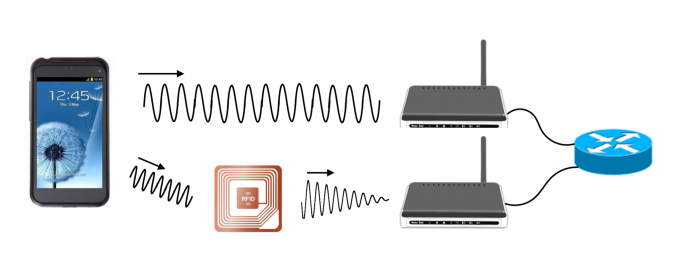A Stanford University research team has developed HitchHike, a tiny, ultra-low-energy wireless radio that could bring us closer to a world that completely embodies the Internet of Things. The group was led by Sachin Katti, an associate professor of electrical engineering and of computer science, and Pengyu Zhang, a postdoctoral researcher in Katti’s lab.
This world in which every device is controlled wirelessly — implantable biosensors, wearable devices, smart cars, smart home sensors, and more — has been nothing more than a dream because there hasn’t been a two-way radio smart and small enough to make it possible. The IoT requires a new class of energy-efficient Wi-Fi radios to pass commands to and from the network to a myriad of devices, and that’s where HitchHike comes into play.
“HitchHike is the first self-sufficient Wi-Fi system that enables data transmission using just micro-watts of energy — almost zero,” said Zhang. “Better yet, it can be used as-is with existing Wi-Fi without modification or additional equipment. You can use it right now with a cell phone and your off-the-shelf Wi-Fi router.”

Photo Credit: InternetOfBusiness.com
Named for its clever design that hitchhikes on incoming radio waves from a smartphone or laptop, HitchHike translates those incoming signals to its own message and retransmits its own data on a different Wi-Fi channel. The prototype’s dimensions are about those of a postage stamp, but the engineers believe that they can possibly make it even smaller than a grain of rice, which would make it useful in implanted devices, such as a wireless heart rate sensor.
Energy usage has always been a roadblock in the journey to IoT. HitchHike consumes 10,000 times less current than Wi-Fi radios. In fact, according to the researchers, the tiny radio uses such little power that a small battery could power it for a decade or more. It can even potentially harvest energy from existing radio waves to power itself — perhaps indefinitely.
HitchHike acts as more of a reflector than a radio. It merely bounces Wi-Fi signals back into the atmosphere — a signal known as backscatter. To work as a true radio, it must be able to produce messages of its own, which is why the research team developed what they call “code word translation.” A Wi-Fi signal is really little more than an endless stream of ones and zeroes in the binary world, which standard Wi-Fi transmits through a set of predefined code words. HitchHike translates the incoming code words into its own data. (If, for instance, the incoming code word indicates a zero and HitchHike wants it to remain a zero, it passes that code word unaltered. If, however, HitchHike wants to change that zero to a one, or vice versa, it translates it to the alternate code word.) Next, to avoid radio interference between the original signal and the new data stream coming from HitchHike — both of which are transmitted at the same time and on the same channel if unmodified — HitchHike instead shifts its new signal to another Wi-Fi channel.
“HitchHike opens the doors for widespread deployment of low-power Wi-Fi communication using widely available Wi-Fi infrastructure and, for the first time, truly empowers the Internet of Things,” said Zhang. Researchers said that HitchHike could be available for incorporation into wireless devices in the next three to five years.
Read the research team’s paper, titled “HitchHike: Practical Backscatter Using Commodity WiFi,” here.
Advertisement
Learn more about Electronic Products Magazine





